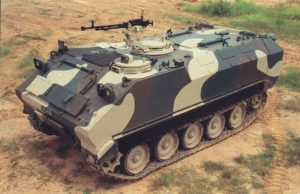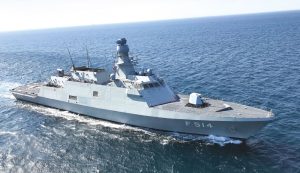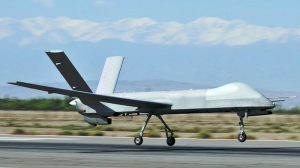On October 19, 2023, the U.S. Department of Defense released a highly detailed report that comprehensively highlights the ongoing efforts of the People’s Republic of China to challenge the international rules-based order and its significant progress in bolstering its military capabilities, as disclosed by a senior defense official speaking on condition of anonymity.
The official provided a comprehensive preview of the 2023 China Military Power Report, a crucial document submitted to Congress. The report is built upon the foundational premise of the National Defense Strategy, which identifies China as the sole competitor with the intent, determination, and capability to reshape the global order. The official underscored that the 2022 National Defense Strategy identifies China’s increasingly formidable military as the Department’s foremost pacing challenge, marking it as a significant global concern.
This detailed report meticulously outlines China’s current strategies, not only on the economic but also on the military front. It offers invaluable insights into their current capabilities, ongoing operational activities, and future modernization objectives. By examining China’s military ambitions, the report aims to provide a comprehensive understanding of how these ambitions shape the current global geopolitical landscape.
China’s leaders aspire to achieve the “great rejuvenation of the Chinese nation” by the year 2049, marking the 100th anniversary of the Chinese Communist Party’s rise to power. This long-term ambition underscores the comprehensive strategy that China is pursuing on a global scale.
Part of this endeavor involves the utilization of military coercion, with numerous documented instances of unsafe intercepts of U.S., allied, and partner vessels and aircraft in the Indo-Pacific region. The report highlights that between the fall of 2021 and the fall of 2023, the United States documented over 180 cases of coercive and risky air intercepts against U.S. aircraft in the region. The number significantly rises when accounting for incidents involving allies and partners, underscoring the global implications of China’s military activities.
The report also delves into China’s intensified pressure campaign against Taiwan, a long-standing point of contention. This campaign includes ballistic missile overflights, increased flights into Taiwan’s air defense identification zone, and simulated joint blockade and firepower strike operations following a visit by a U.S. congressional delegation. These activities are in alignment with China’s broader strategy of reasserting control over Taiwan, which poses a significant regional challenge.
In addition, the report scrutinizes China’s deepening security ties with Russia, underscoring the strategic importance of this alliance to China’s emergence as a global power. The partnership between China and Russia has far-reaching implications for global politics and security dynamics, and the report analyzes this development in detail.
China’s continuous development of its nuclear, space, and cyberspace capabilities is explored in-depth. The report underscores China’s rapid modernization and expansion of its nuclear forces, which has surpassed previous predictions. As of May 2023, it is estimated that China possesses more than 500 operational nuclear warheads, a number that has exceeded expectations. Moreover, China is in the process of developing new intercontinental ballistic missiles, potentially including conventionally armed missiles, which would give them the capability to threaten conventional strikes against targets in the continental United States, Hawaii, and Alaska.
The Chinese military’s modernization efforts extend across all domains of warfare. This includes improvements to its land, sea, and air forces. The PLA Navy is recognized as the world’s largest, with ongoing developments, including the launch of new aircraft carriers and amphibious assault ships. Furthermore, the PLA Air Force is rapidly catching up with western air forces, as it continues to build up both manned and unmanned aircraft. Notably, China has introduced the H-6N, its first nuclear-capable, air-to-air refueled bomber, demonstrating its aspiration to possess extended global reach.
As the report emphasizes, the Chinese military has not been involved in a shooting war since 1979. However, this is viewed as a shortcoming that Chinese leadership is actively addressing by making military training and exercises more realistic. Learning from the involvement of other countries in military conflicts is another key aspect of China’s military development strategy. They have closely studied the military conflicts involving U.S. forces, Russian forces, and others over the years to better understand how to prepare for future combat operations. Notably, the report highlights China’s meticulous observation of Russia’s war of aggression in Ukraine, which offers lessons in modern warfare and conflict dynamics.
China’s military expansion goes beyond its borders, as it actively seeks overseas bases and resources to become a globally relevant force. The establishment of an overall logistics command and collaboration with the Belt and Road Initiative to gain access to key regions underscores China’s ambitious global strategies.
Finally, the report also highlights the lack of contacts between U.S. and Chinese defense officials and emphasizes the potential risks of operational incidents escalating into crisis or conflict due to the PLA’s refusal to engage in military-to-military communications with the United States. This communication gap is further exacerbated by the PLA’s increasingly coercive and risky operational behavior.
In summary, the U.S. Department of Defense’s 2023 China Military Power Report offers a comprehensive analysis of China’s military expansion and global ambitions, providing valuable insights into the evolving global security landscape and the challenges it poses to the international community.






